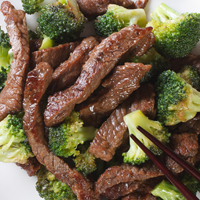Place all ingredients except the parmesan cheese and lemon juice in a food processor. Process for 30 seconds until the mixture is a coarse paste. Remove from processor and put into a glass bowl. Stir in Parmesan cheese and lemon juice and mix well. Transfer the pesto to an airtight container, cover with a layer of extra-virgin olive oil, and refrigerate up to 3 days. Makes 1 cup of pesto.
Note: Arugula pesto can be tossed into pasta or rice, and it can also be used on fish and lamb. Try the arugula pesto on slices of fresh French bread and toast in the oven at 350 for about 7 to 9 minutes or until the bread is slightly golden. This makes a delicious snack or appetizer.



